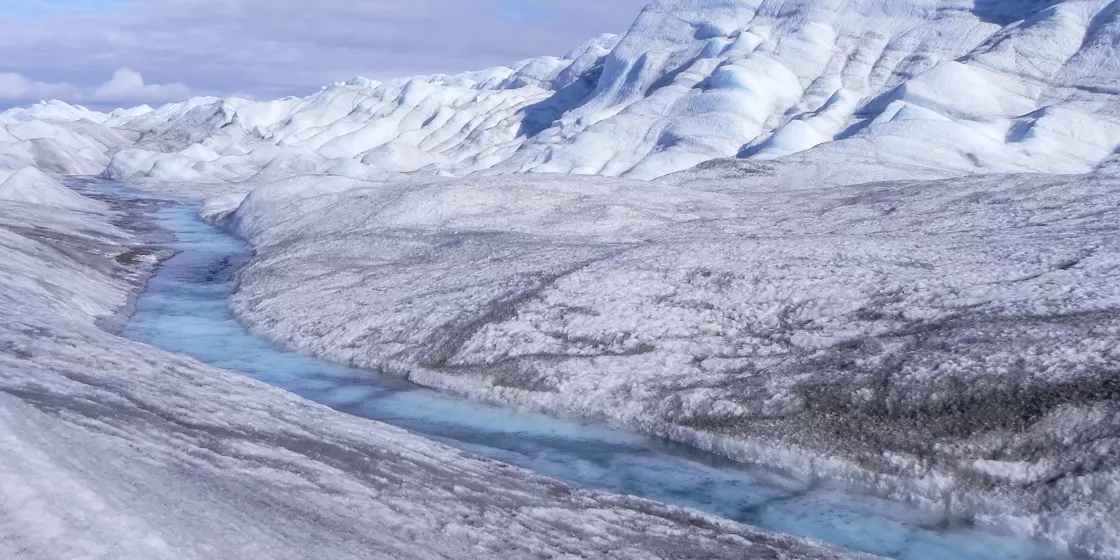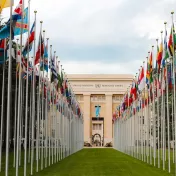Climate tipping points are thresholds in the Earth’s climate system. When passed, this system experiences abrupt and typically irreversible changes. Over the past decade, there has been a rapid evolution in research around these tipping points, and we now know that some could be crossed over the coming decades, dramatically worsening an already dangerous climate situation.
With tipping points, small, gradual changes—global temperature increases, for example—can result in strong, fast, and extreme responses in the system. The effects, which can range from temperature increases, changes in precipitation patterns, increased storminess, flooding, and drought, go above and beyond those already predicted in climate change scenarios.
These changes will wreck the lives of countless millions of people, especially in the most deprived areas of the world. Livelihoods will vanish, homes will be rendered uninhabitable, communities will be sundered, and people will die. This growing threat has led to calls for immediate political action to reduce global greenhouse gas emissions and help the most vulnerable prepare for a more hostile climate.
In this blog series, we take a look at four of the most treacherous tipping points: the Amazon rainforest, the Atlantic Meridional Overturning Circulation, Coral Reefs, and the West Antarctic Ice Sheet. We also provide an overview of their physical nature and their impact on human security, including the important issue of loss and damage, a topic which became a major discussion point at COP27.
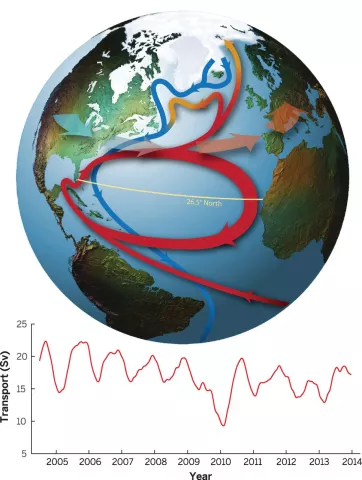
In the 2005 Hollywood blockbuster The Day After Tomorrow, the people of Earth experience the rapid and catastrophic effects of a disruption to the northward flow of warm water and air in and above the Atlantic Ocean. In the intervening years, scientists and climatologists have baulked at the inaccuracies in the premise. At the time, J. Marshall Shepherd, a climate scientist at NASA, said that ‘while heartened that there's a movie addressing real climate issues, he’d give it a D minus or an F in terms of science’. But as infamous as it is for its bad science, the film is in fact playing on a very real climate phenomenon—a shutdown or slowdown of the so-called Atlantic Meridional Overturning Circulation (AMOC).
The AMOC is the ocean phenomenon in the Atlantic Ocean which brings heat from the southern to northern hemisphere. It is a component of the global ocean circulation system, which is responsible for the flow of heat around the globe. In the Atlantic, a big player in the act of bringing heat to the northern hemisphere is the sinking of water in areas of the North Atlantic. This act of sinking, like a snake, essentially pulls water and heat northwards from more southern parts of the ocean. By moving heat, the AMOC, then, is what controls the balance of heat and temperature across the Atlantic Ocean as well as neighbouring regions in both the southern and northern hemispheres.
Because the AMOC is such an important control on heat in the Atlantic region, it is suggested that changes to it would result in changes in the global distribution of heat and precipitation. These changes could include global impacts on temperature and precipitation patterns, for example, North Atlantic cooling, Southern Hemisphere warming, southward-shifted equatorial precipitation belts, monsoon weakening in Africa and Asia, leading to drying in the Sahel and parts of Amazonia.
In fact, we know this has happened numerous times throughout history. Evidence from the geological record has demonstrated that on multiple times in the past, the AMOC either slowed down or shut down, and often over relatively short timescales—decades—leading to what would be termed ‘rapid changes’ in global climate. These historical cases have led to notions that the modern day AMOC could be impacted in similar ways.
Indeed, in recent years, an observation network has been established and we now know that the AMOC is in fact slowing down. This effect is likely predominantly—but not only—caused by a relative freshening of the waters in the North Atlantic in response to the melting of the Greenland Ice Sheet (GIS). This melting appears to be a very important factor in tipping the AMOC to an alternative weaker state. What is interesting is that the melting of the GIS represents another climate tipping point in itself. Let’s think about this.
What is the GIS and why is it important?
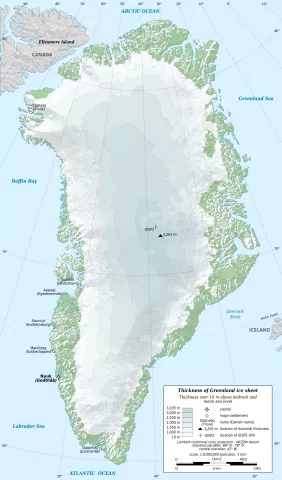
The GIS is essentially a giant continent-scale lump of ice which sits on the bedrock below, across the nation of Greenland. Such ice sheets, at multiple times in the past—during ice ages—dominated regions further south, including across North America and northern Europe. Due to anthropogenic warming, the GIS has been melting in recent years in what is called a negative ice mass balance. The ice sheet’s mass is decreasing because there is less snowfall on its surface than ice mass melting off its sides, meaning that snow cannot rejuvenate its bulk mass. Indeed, in recent years, we’ve seen the first rainfall on the GIS’s summit caused by global warming. Once that ice mass balance goes in favour of the melt, the ice sheet is on its way to collapse. In the long run, this means that coastal areas will be flooded by the effects of sea level rise.
The GIS is important for multiple reasons, but especially because it is a storage of water, holding gigantic ocean scale volumes of water as ice. Human civilisation has been built during a period of time when that water has been safely stored in the world’s ice sheets, including the GIS. In that manner, over the past 10,000 years, since the agricultural revolution and the later shift to urbanisation in many coastal regions, humans have been building their lives close to the sea. If water is not stored as ice anymore and melted into the oceans, sea levels will rise and submerge coastal regions, changing geographies. This has happened in the past. We know that the GIS waxed and waned on so-called paleo timescales before the onset of urban coastal human civilisation. Through geological time, the melting has dumped huge volumes of water into the global ocean, submerging entire coastal regions.
We know today that the GIS is melting in response to climate change, and a tipping point would be crossed if the ice mass balance reaches a threshold. Indeed, according to some research, it has already been crossed. This would result in a range of global impacts, with regional consequences all over the world, especially with regards to sea level rise and impacts on the lives of people living in coastal regions and on so-called small island developing states.
Other than that, the ensuing introduction of tonnes of melted ice as freshwater into the North Atlantic prevents the sinking of northward flowing water in the North Atlantic, effectively slowing down the AMOC. We know from geological evidence that this has happened repeatedly in the past—the last time as recent as around 11,000 years ago at the end of the last ice age.
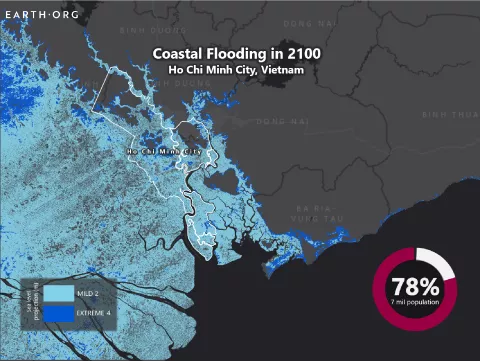
The AMOC tipping point science and threat
If the GIS continues to melt at current rates, which appears likely given future carbon emission and climate model projections, freshwater will continue to be dumped into the North Atlantic, which is likely to slow down the AMOC. Most recent research on AMOC as a tipping point takes this future GIS behaviour into account. There is a good degree of confidence that a slowdown will continue, and that the AMOC will tip. That being said, like all tipping points, there remains uncertainty as to when this will happen. The most recent estimate based on a high profile research paper in the journal Science suggests that this could happen anywhere between 1.4°C and 8°C above pre-industrial mean temperatures (with a median estimate around 4°C). Bear in mind that we are already approximately 1°C above the pre-industrial mean. The authors estimate that this threshold point could be crossed as early as 15 years from now, but more likely around 2070.
The effects of this AMOC change include a reduction of warming in the northern hemisphere which would ordinarily take place due to anthropogenic climate change, while simultaneously increasing temperatures in the southern hemisphere, affecting countries predominantly in South America and Africa.
Socioeconomic impacts, loss and damage, and human security
Despite the cataclysmic picture painted for us by The Day After Tomorrow, the big story in the impacts literature is whether the AMOC’s shutdown will cause substantial harms, or whether it will in fact mitigate the impacts of warming in the northern hemisphere—and thus be a net benefit to the world economically. The latter is the opinion of several papers written by high-profile climate economists publishing in prestigious academic journals (for example, 1, 2). However, a group of high-profile climate scientists judges it as both implausible and dangerous (3, 4). Climate economists admit that there is limited data to go on and scientists do not have much more to go on themselves. A lack of comprehensive impacts data is thus a feature of this tipping point.
General loss and damage
The key paper behind the idea that a weakening or even collapsing AMOC is in fact a net positive for Europe was published in 2016 in the influential, high-profile journal American Economic Review. Far from loss and damage, the authors find that ‘cooling in Western Europe due to a slowdown of the thermohaline circulation is less in magnitude than the expected warming due to increasing greenhouse gas concentrations’. In other words, the collapse of the AMOC actually protects Western Europe against some of the worst effects of global warming and thus has ‘modest, but by and large, positive effects on human welfare’. The authors calculate that effect at an increase in global income of over 1%. We can call this the ‘positivity position’.
Building on this paper, when attempting to calculate the effect of tipping points on the social cost of carbon (SCC)—the amount of money it would cost us paying today to avert the emission of a tonne of carbon dioxide—Dietz et al. find that the AMOC tipping point actually lowers the SCC substantially. In the scenarios in which the worst warming takes place, it does so by up to 5.7%. That means that the more thoroughly the AMOC collapses, the better. The SCC is not a trivial metric: it feeds directly into policy discussions regarding the optimal price of carbon and thus the very heart of climate change mitigation policy.
However, prominent climate scientists disagree. Keen et al. state that the positivity position ‘defies good sense and scientific research’. They base this on an OECD study that describes the impact of an AMOC shutdown as ‘catastrophic’. Far from countering global warming’s impacts, the OECD finds that an AMOC collapse makes the issue of food production substantially worse. Approximately 58% of the world’s land currently suitable for wheat production will become unsuitable, as well as 59% of the land suitable for maize cultivation. The amount of land suitable for rice production will rise, but the potential production losses in wheat and maize will dwarf this benefit. The human impacts of this are obvious: drastic rises in the price of bread and other staples, hunger and caloric deficits, and perhaps even mass starvation. The land, the OECD finds, will simply become less suited to supporting life.
Not all climate economists hold the positivity position. William Nordhaus, the Nobel Prize-winning father of climate economics, despite assigning the prospect a very low probability in 2000, nevertheless found that an AMOC collapse could cause a 30% reduction in global GDP. This is more in line with the world the OECD is describing and indeed the position of the climate scientists. We can imagine the economic catastrophe this would involve in terms of mass job losses, starvation, and the complete loss for countless millions of any sort of dignified life. However, we still do not have any concrete numbers for any of these effects, nor indeed any clear sense of their geographic impact.
Specific impacts and human security
One of the striking aspects of the positivity position is its tendency to discuss the beneficial impacts of an AMOC shutdown in terms of Europe, while noting that the negative impacts fall elsewhere. In terms of overall economic impact, Europe’s great wealth no doubt means that benefits to Europe will count decisively against harms to much poorer places, which have less to lose in strict monetary terms. As a guide to policy, however, this is eurocentrism at its most systematic. If the measure counted lives, we may get a very different picture.
Precipitation
While the warming-cooling balance is still a matter of debate, the impact of an AMOC shutdown on precipitation is more certain. As Dietz et al. note, though, this impact has yet to be incorporated into economic studies. Drought risk is enhanced in Northern Europe, Central America, and Southeast Asia. This has obvious implications for agriculture. Studying the UK, Ritchie et al. found that losses of agricultural output with AMOC added to warming were ten times larger than losses without it. Although adapting to this new climate is possible through irrigation, they find that it would be prohibitively expensive. Jackson et al. note that a slowdown of the AMOC will result in weaker peak river flows and thus vegetation productivity, leading to water shortages and major food insecurity: Changes in the water flow and temperature will cause the near-certain collapse in a range of fish stocks, including cod, haddock, and herring. They conclude that an AMOC slowdown will reduce the net primary production across the UK by up to 50%.
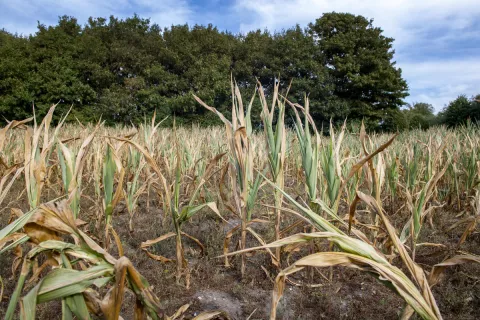
Detailed studies like this are not available for the AMOC tipping point’s impact in other regions. However, its role in a potential tipping point cascade indicates that such studies would obtain harrowing results. As the OECD notes, the AMOC is the ‘great connector’ in the climate system; its collapse would be broadly felt throughout the global climate and could trigger a series of other tipping points. Through the disruption, changing patterns of precipitation would wreak on the Indian Summer Monsoon, and India would lose perhaps 70% of its current rainfall under an AMOC shutdown scenario. The impact on regional agriculture and the broader economy would be devastating. The African Monsoon would also be affected which would lead West Africa, a region already suffering the worst impacts of the global temperature increase, into further drought, economic ruination, and great loss of life. The Amazon, if not already tipped into savannah, will likely be so, with all of the impacts on human security we discuss in that blog.
Open research questions
The great weakness of the AMOC impacts research thus far is its emphasis on abstract figures and the paucity of data covering clear human impacts. We have a very limited sense of the numbers of people that may be affected and the manner in which they may be harmed. For example, how many people will likely fall into food insecurity as a result of the vast tracts of land no longer suitable for cultivation? How much greater will be the job losses in West Africa due to the added impact of AMOC on the African Monsoon?
We must also ask whether there is any benefit to the partial economic studies we find in much of the climate economy literature. They run the risk of greatly misleading policymakers and are less up-front about their partial nature than they should be, given such risks. Future research will need to be conducted to take a look at these issues, if we are to get a detailed impact forecast for a world in which the AMOC tipping point is crossed.
Dr. Conor Purcell is a climate researcher and award winning science writer. Dr. Michael Keary is a political scientist, specialising in environmental politics and political theory. The authors are the co-founders of NovaAura Research, helping NGOs and government bodies understand future climate projections and environmental policy.

